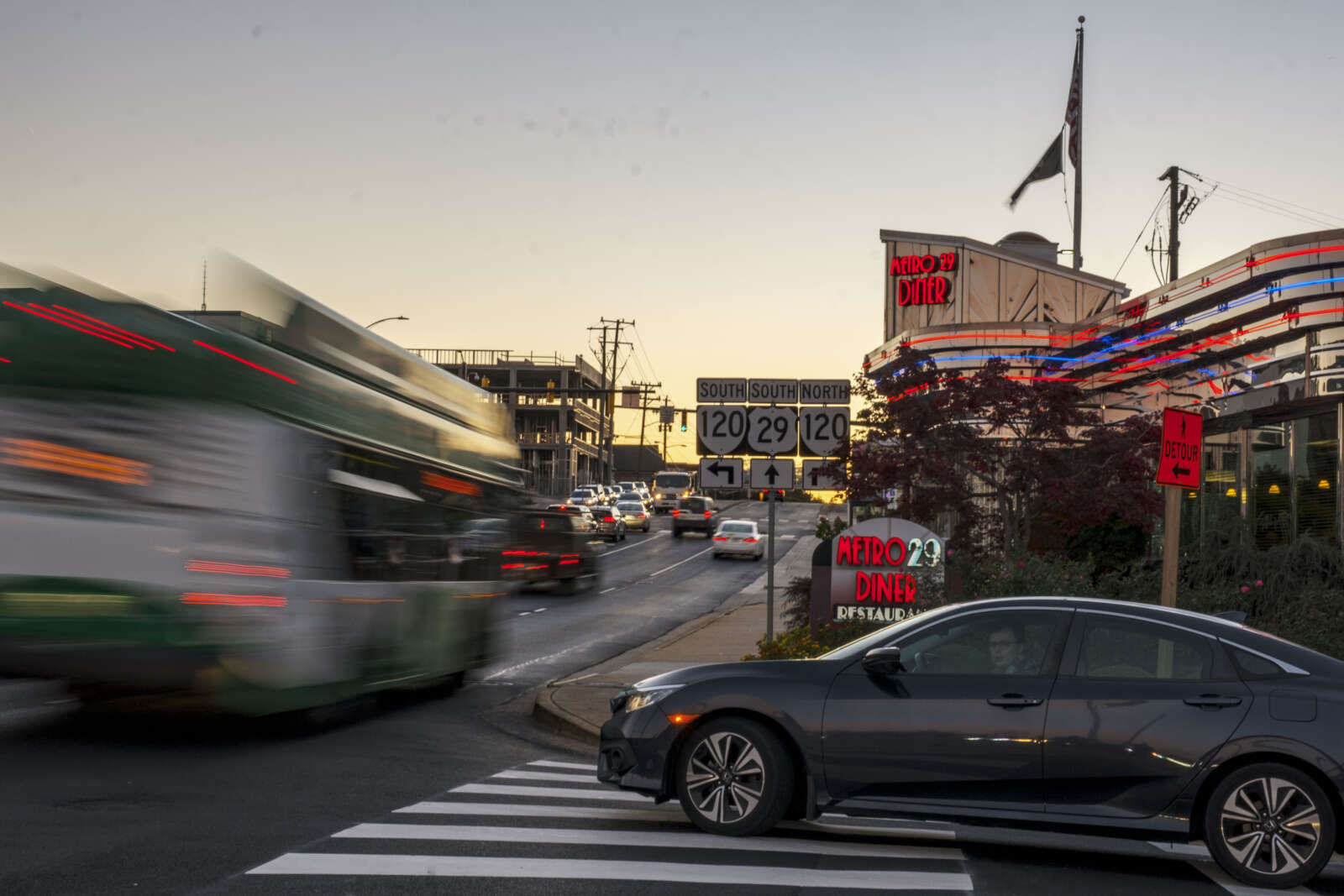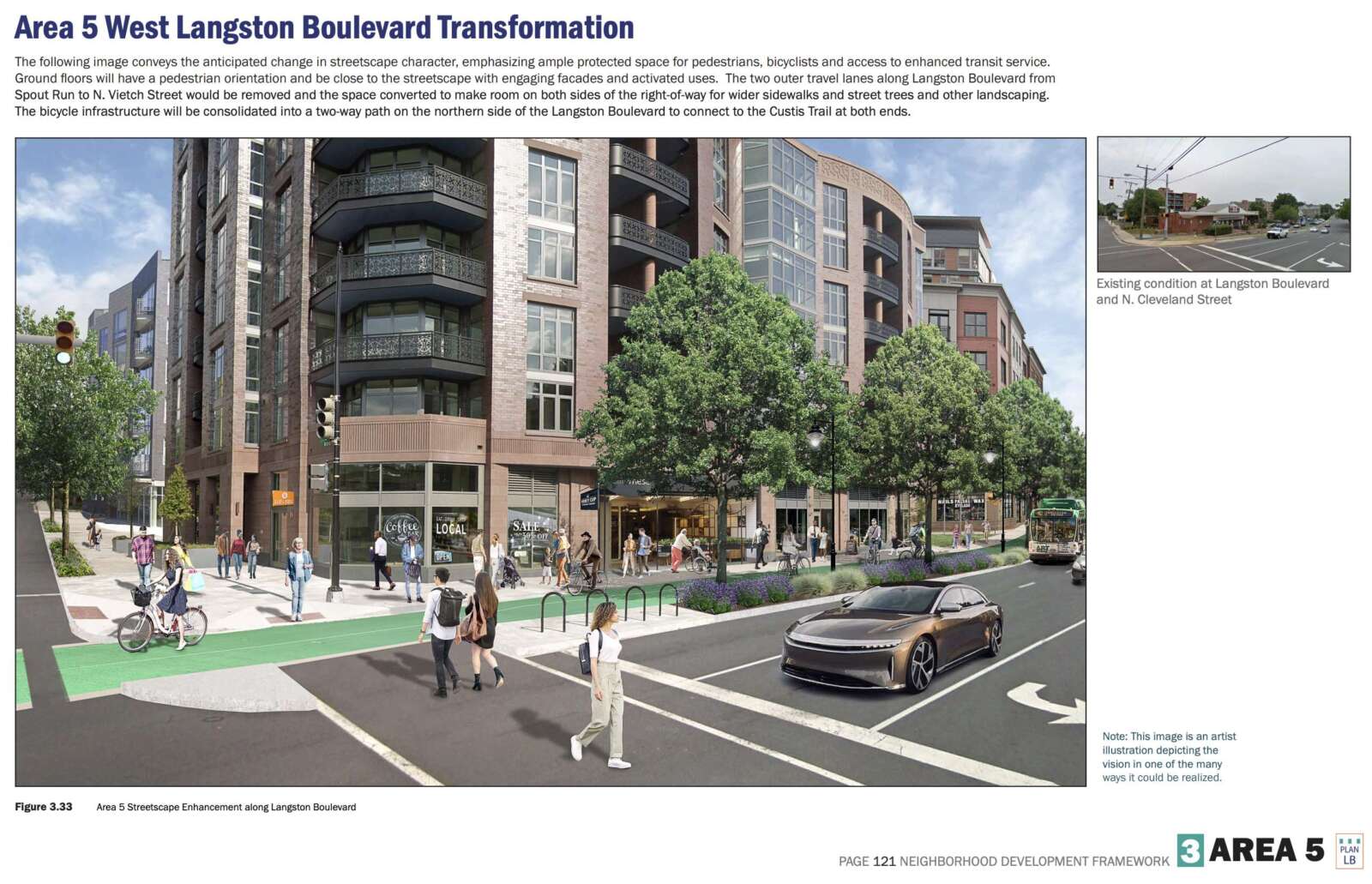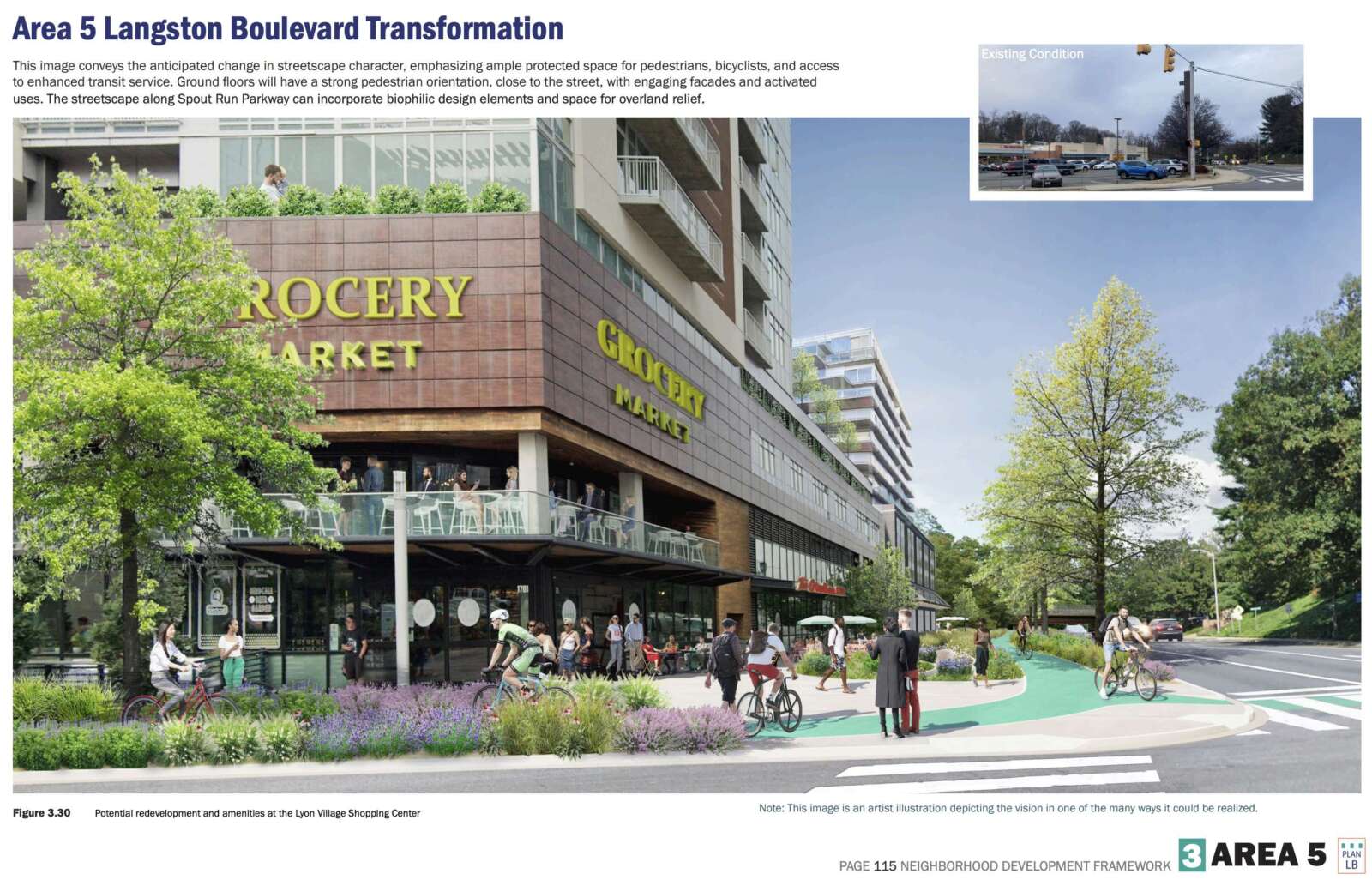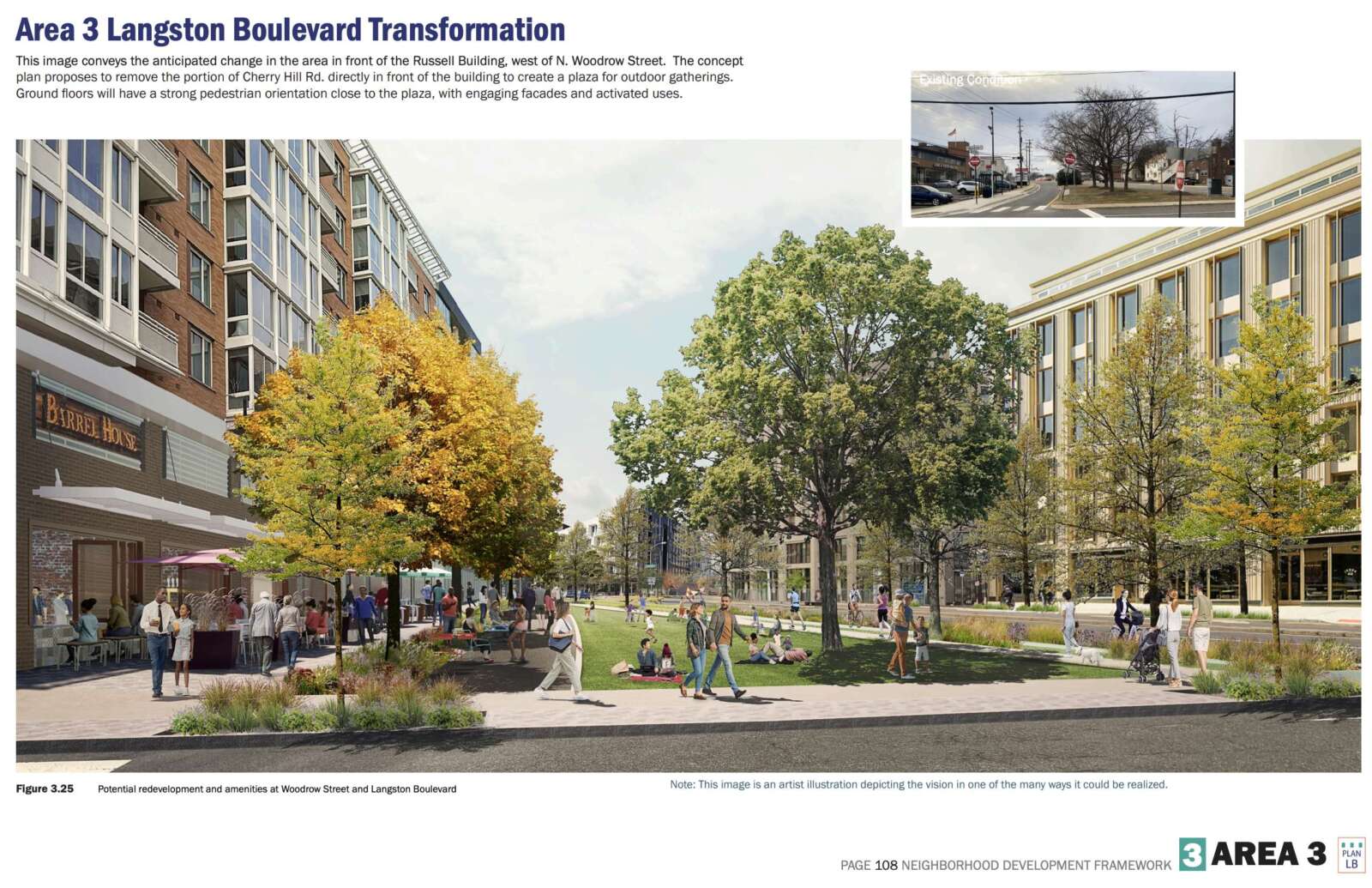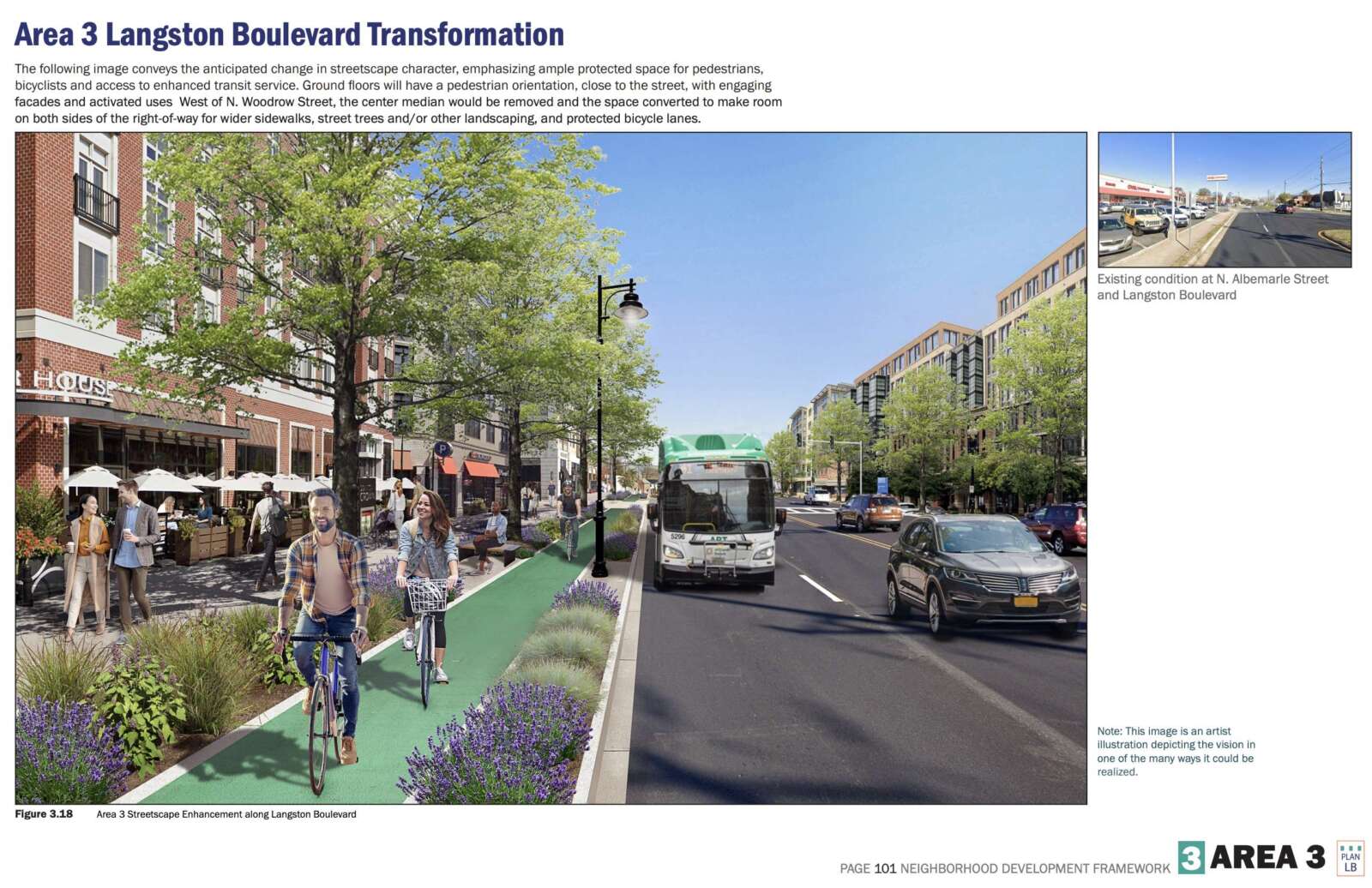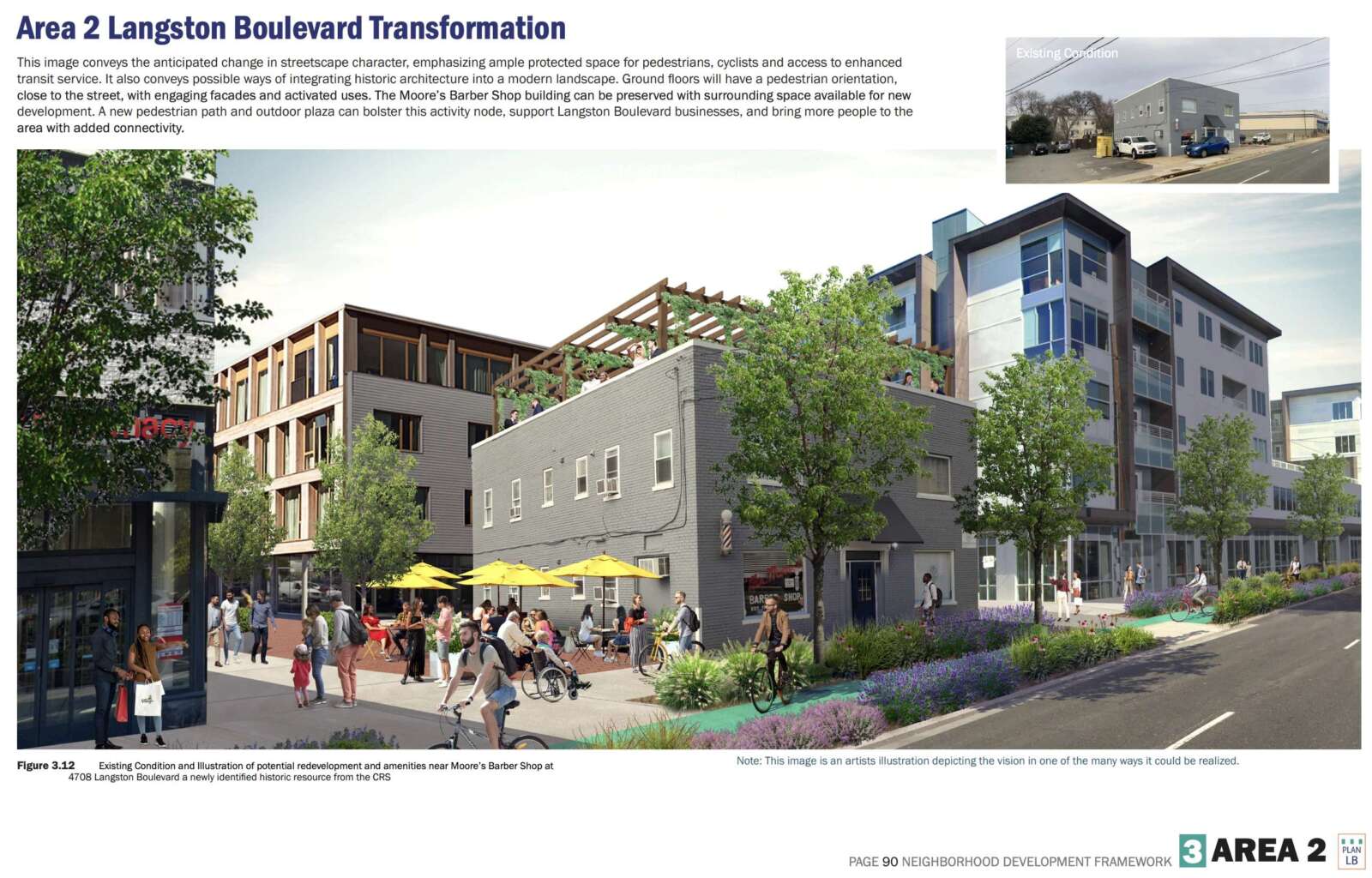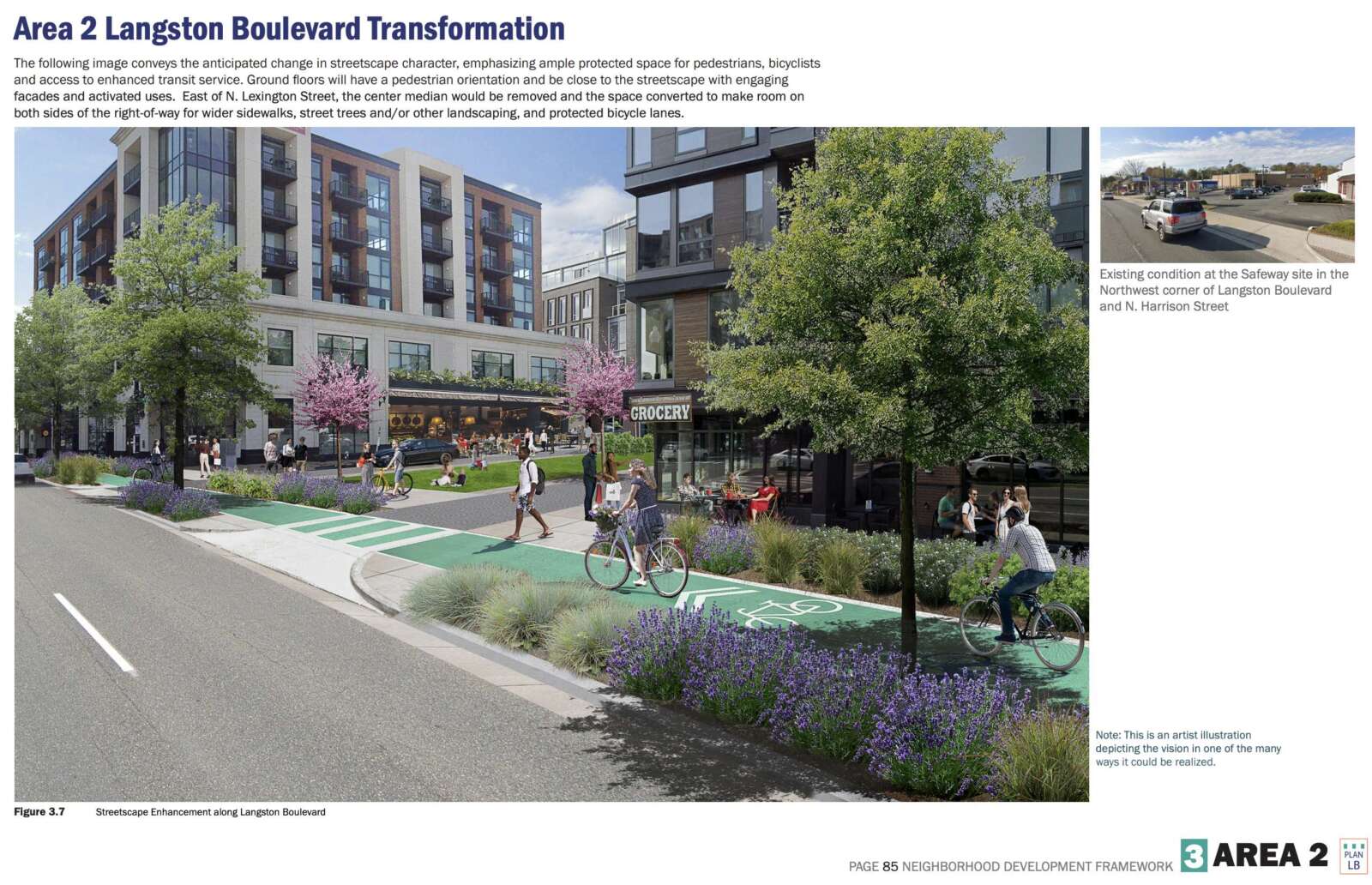It has been about 10 months since Arlington County released drawings of a future Langston Blvd.
That vision included apartment buildings of up to 12-15 stories, cafés and wide sidewalks buzzing with people, and bike lanes buffered by lavender bushes — a substantial change from the commuter route lined with strip malls, car dealerships and quick-service establishments with drive-thru windows.
Now, the county is gearing up to publish a more formal draft plan that refines the ideas set forth last year. That draft will take into account all the supportive and critical feedback people submitted last fall and winter.
Once the draft is released — and exact details and dates on this are yet to be determined — there will be more public engagement opportunities, Dept. of Community Planning, Housing and Development communication specialist Rachel LaPiana tells ARLnow.
The multi-year effort to create this planning document is known as Plan Langston Blvd. It re-envisions what was once known as Lee Highway as a walkable and bikeable, verdant commercial corridor with more affordable housing.
After hearing hundreds of hours of comments from residents, and a decade’s worth of work, Langston Blvd Alliance Executive Director Ginger Brown says she is excited to get her hands on the draft plan soon.
“We know this is a huge step forward,” she said. “We’re very eager to see the final draft plan.”
The draft plan is supposed to be informed by community and commission input but in many cases, that input is deeply divergent, according to snippets of comments included in a summary of public engagement year.
“If we wanted to live in denser, taller neighborhoods we would have moved to [Rosslyn],” wrote one person. “Stop forcing your vision of redevelopment down residents throats.”
“As a working professional with a young child, I look forward to eventually being able to buy a house in Arlington as a result of projects like this one,” wrote another. “Please ignore grumpy people who hate change and implement this plan!”
There were some points of agreement.
People generally want to see a safer Route 29 — the other name for the VDOT-maintained artery — with more street trees and wider sidewalks, as well as underground utilities and fewer driveways. Some wrote in strong support for protected bike lanes over cyclists and drivers sharing lanes, a traffic pattern that may harm, not help, cyclists.
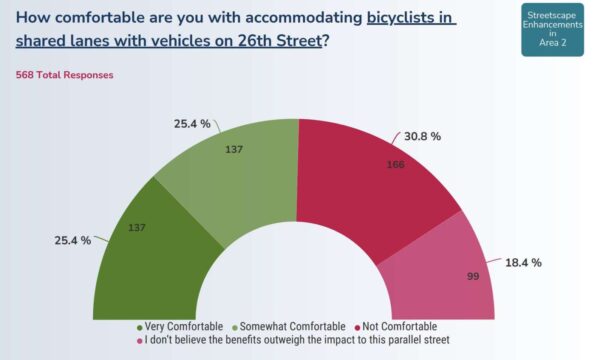
“We’d like to see a greater emphasis on pedestrian safety and transportation and transit improvements and more affordable housing,” Brown said.
Majority support for greater development broke down somewhat when it came to what buildings should look like.
“People in my neighborhood are looking for development similar to the unified and attractive character of King Street in Old Town [Alexandria], not the development and tall buildings that characterize Ballston or Clarendon,” wrote one person.
“We should allow 15 stories for all sites between Langston & [I-66],” wrote another. “This could provide so many amenities and increase property values.”
For instance, where Route 29 is bordered by the Waverly Hills, Donaldson Run, Old Dominion, Glebewood and Waycroft Woodlawn neighborhoods, a slight majority favored taller heights — with many others preferring a range of other, shorter options.
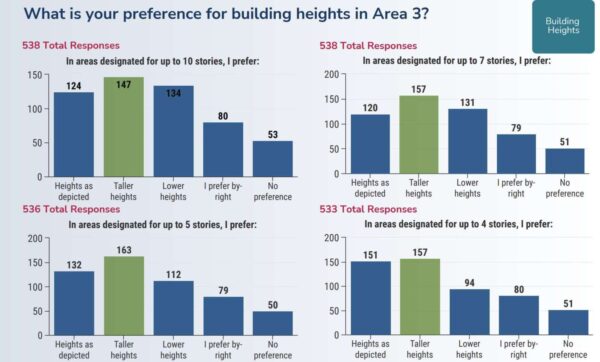
A majority also wanted to see a greater mix of businesses along Route 29, some segments of which have lots of car dealerships and mechanics, as well as walkable destinations.
Respondents expressed interest in a wide variety of options, with substantial support for gyms, childcare services and small-batch food producers, as well as one-off suggestions like book stores, art galleries and clothing stores.
LaPiana said other goals of Plan Langston Blvd include: increasing tree canopy, flood resiliency and stormwater mitigation, reducing energy demand and emissions and adding public spaces and plantings.
While residents are brimming with ideas, the county will need to identify policies and land use tools that it can realistically use to realize such blue-sky ideals.
The forthcoming draft plan will include tools that county planners think will be needed to reach these goals and a blueprint for how to achieve them, according to LaPiana.
Some of those tools include land-use plan and zoning ordinance amendments, which staff are considering and will share soon, LaPiana said.
One option could include allowing more land uses on properties that abut denser, more commercial zones but are currently improved by single-family homes.
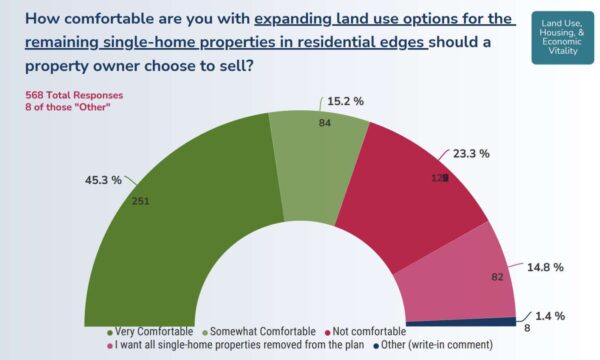
Other tools, critics have pointed out, include relying on developers to attain stormwater mitigation in exchange for greater density.
Although Plan Langston Blvd is still coming together, Brown says she is already excited to tackle planning efforts for Cherrydale and East Falls Church neighborhoods, which were left out because they have neighborhood-specific growth plans with limited results thus far.
“We’re looking forward to doing updates for East Falls Church and Cherrydale, too,” Brown said.


